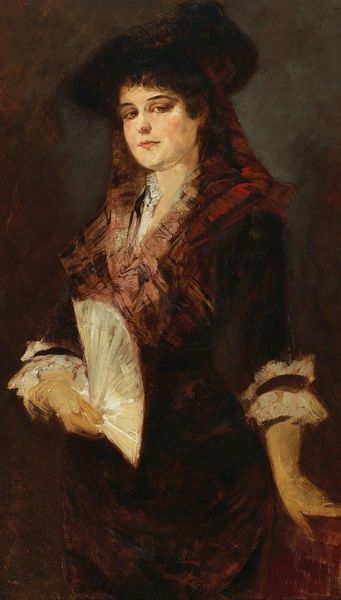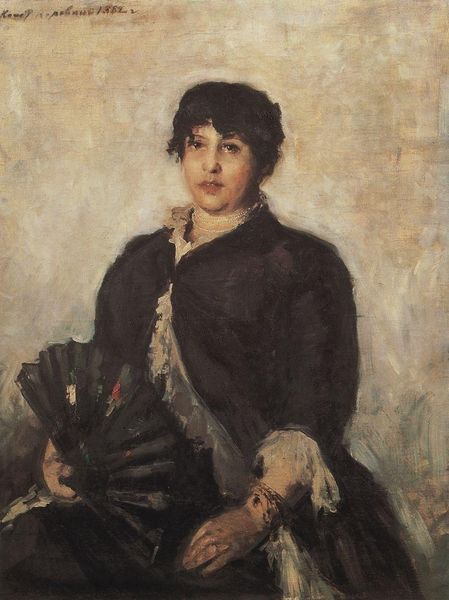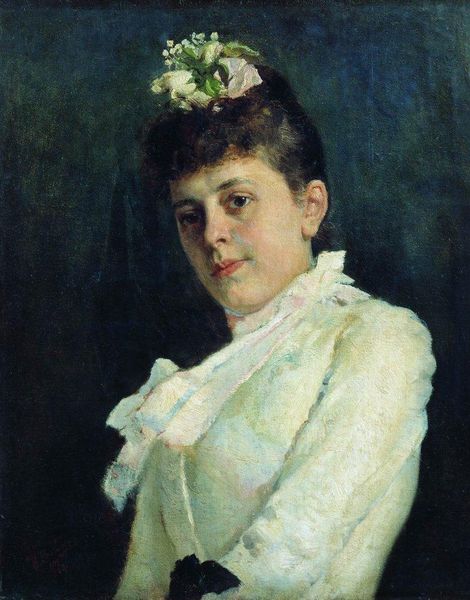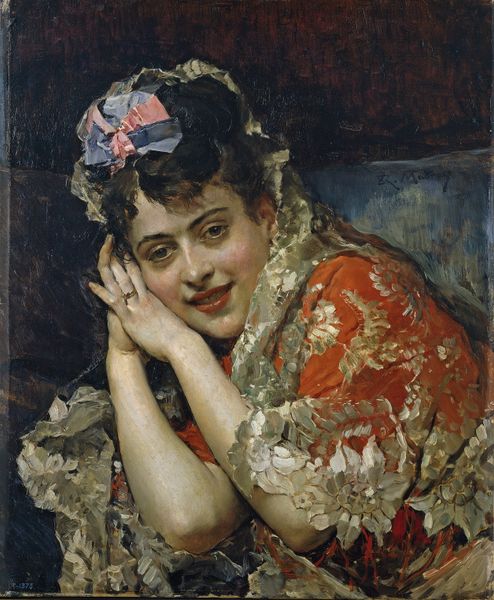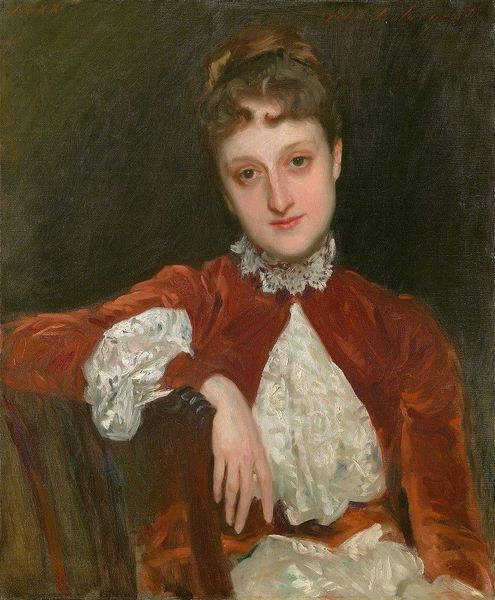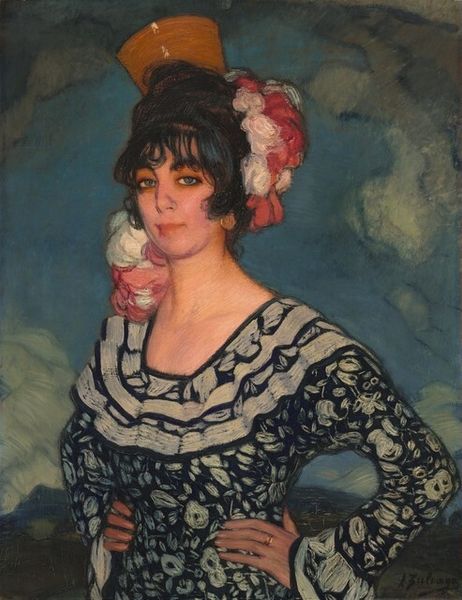
Frau im scharlachroten Kleid mit Zeitungsblatt und Ficus Frau im roten Kleid mit Zeitung 1884 - 1889
0:00
0:00
oil-paint
#
portrait
#
figurative
#
impressionism
#
oil-paint
#
oil painting
#
neo expressionist
#
genre-painting
Copyright: Public Domain: Artvee
Curator: I am struck by the almost unsettling intensity in "Frau im scharlachroten Kleid mit Zeitungsblatt und Ficus" or "Woman in Scarlet Dress with Newspaper and Ficus", an oil painting by Anton Romako, likely created between 1884 and 1889. The immediacy is palpable. What do you sense upon viewing it? Editor: I agree about the immediacy, it's in the almost melancholic gaze, directed just past the viewer, combined with that dominant red. It’s visually arresting and charged with unspoken narrative. The newspaper introduces an element of real time into what would otherwise be a straightforward portrait. Curator: Precisely. Romako was not merely capturing a likeness; he was depicting a modern woman, engaging with current events, but constrained by societal expectations, almost a vibrant flash of color trapped in a somber setting. Her red dress is assertive, yet her posture conveys a sense of confinement. We see how portraiture could capture a cultural moment. Editor: The red is significant. Traditionally, it symbolizes passion and revolution. Her dress makes a bold statement, particularly within the domestic sphere indicated by the Ficus plant. The paper and the plant are like attributes. Do you interpret the plant in a similar fashion? Curator: Absolutely. The Ficus, a symbol of domesticity and shelter, is juxtaposed with the open discourse of the newspaper, indicative of a woman who exists at the intersection of private and public spheres. The juxtaposition hints at a longing for something beyond her immediate reality, at a time where female intellectual life was constrained. Editor: Indeed. But let's not overlook the symbolic nature of the newspaper. It not only places the woman in the current time, as we said, but hints at potential knowledge and power; however, it is also a very disposable item, so could speak about contemporary relevance or maybe even triviality. Romako creates this ambiguous symbolism effectively. Curator: I hadn't thought about the disposability of the paper, that adds another interesting layer to Romako’s representation. It perhaps subtly underscores the fleeting nature of both beauty and information within the relentless march of history. He provides us with more than just a surface reading; he provokes active thought about the society in which he lived. Editor: It’s a portrait that lingers with the viewer long after, inviting continual reinterpretation. Curator: Yes, art as a dialogue across centuries.
Comments
No comments
Be the first to comment and join the conversation on the ultimate creative platform.




